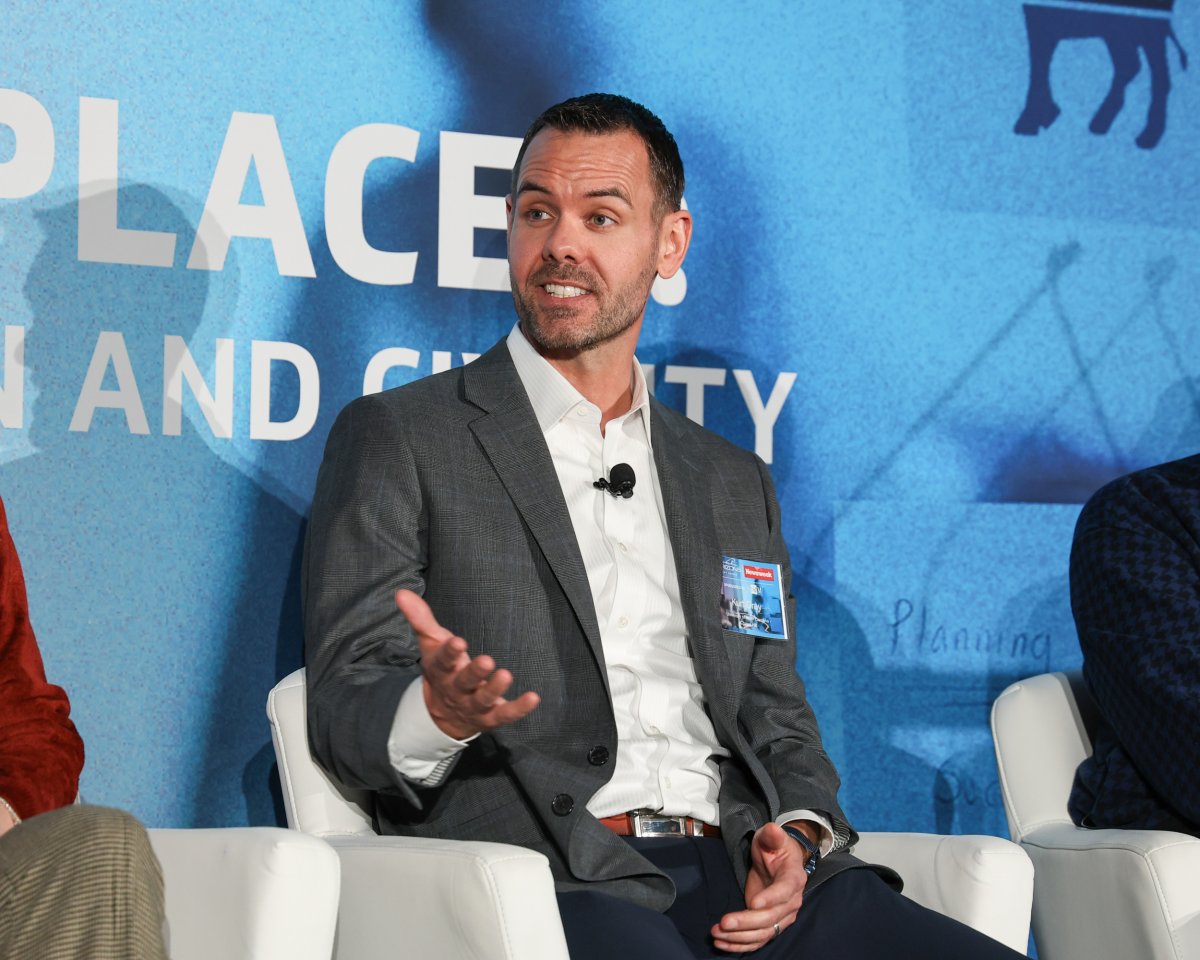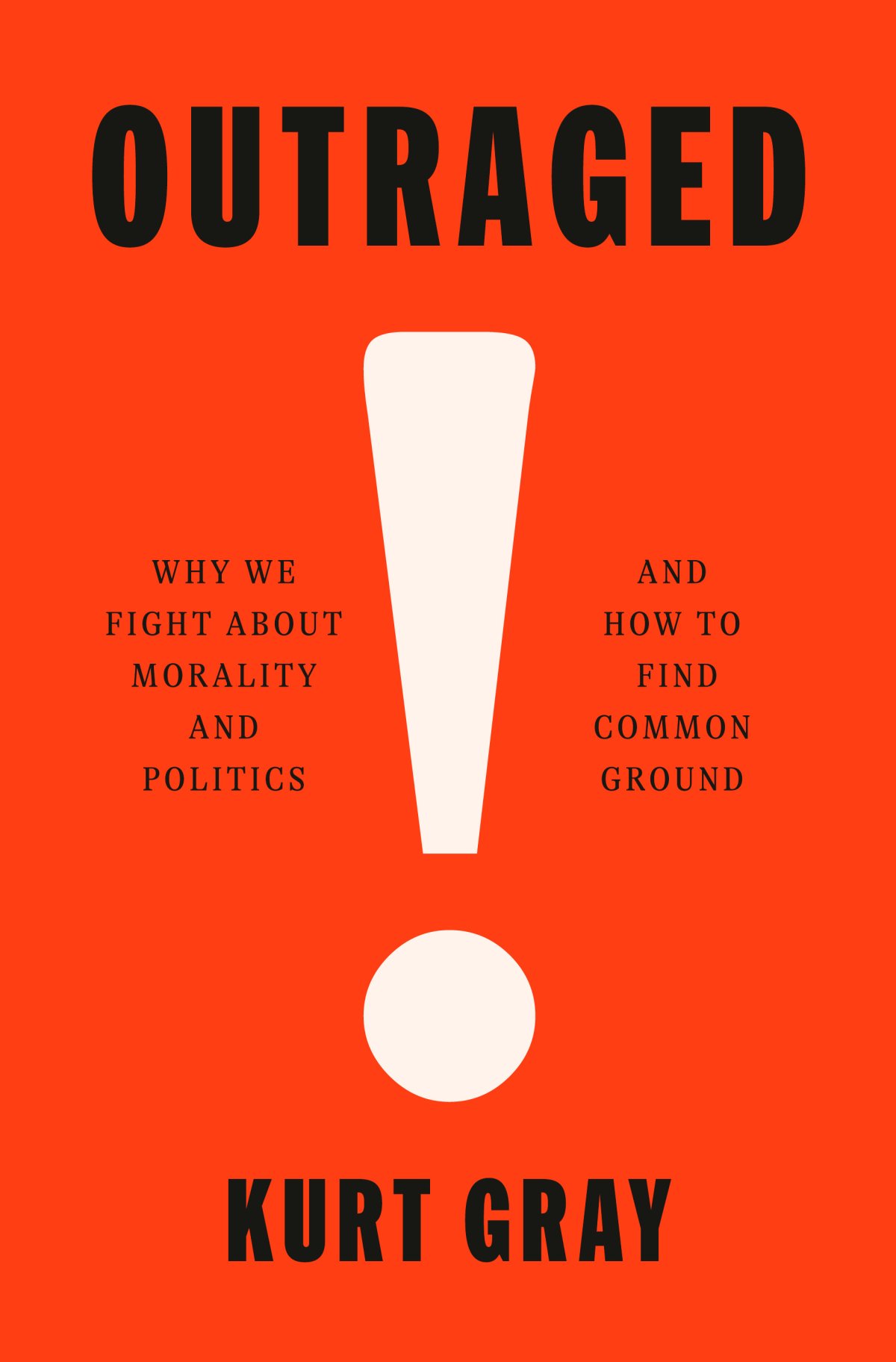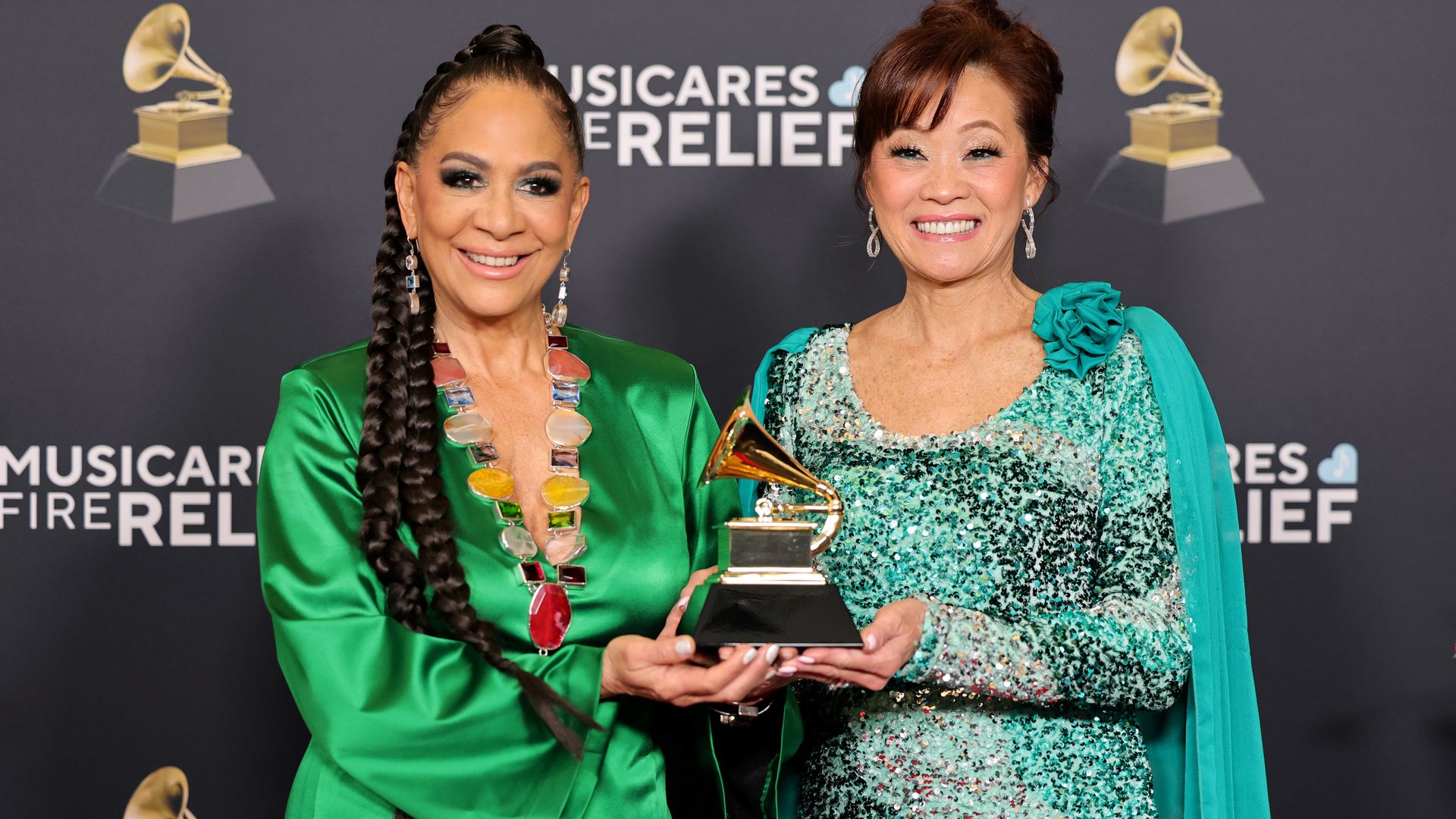This excerpt comes from the book Outraged: Why We Fight About Morality and Politics and How to Find Common Ground by Kurt Gray, social psychologist and professor of sociology and neuroscience at the University of North Carolina at Chapel Hill. In the book, Gray outlines his findings on morality, conflict and why we can't all just get along. He also shares guidance for overcoming these differences in personal settings, which is why this excerpt and the book may have value and resonance with business leaders. Gray was also a panelist at the Newsweek Horizons event How to Foster Inclusion and Civility on December 10, 2024. You can listen to the full panel here.
Excerpt below:
Political philosophers have long recognized the paradoxical connection between increased safety and greater perceptions of evil. The "Tocqueville paradox," named after the nineteenth-century French diplomat Alexis de Tocqueville, argues that as societies enjoy more economic and moral progress, people get more frustrated at injustices. Tocqueville understood the subjectivity surrounding which acts are judged as "injustices," and that these judgments hinge on people's reference points. The less overall injustice in a society, the more that unjust acts should stand out—thereby inciting outrage. As Tocqueville puts it, "It is natural that the love of equality should constantly increase together with equality itself, and that it should grow by what it feeds on." As society gets less unjust, people demand even more justice.
The Tocqueville paradox nicely captures the idea of concept creep and explains how people today can be outraged at (historically speaking) minor social injustices, despite being surrounded by (historically speaking) unprecedented equality. People feel outraged not despite increasing equality but because of it.
The trouble with the creep of harm and evil is that our fixation on smaller and smaller injustices may lead us to destroy institutions that work to keep us safe, like the courts and the police. This is the conservative argument against concept creep, and it should be taken seriously because these institutions (like the rule of law) generally do make us safer—at least much safer than our ancestors, who lacked these institutions.
At the same time, if concept creep is a problem, it is surely a problem of progress. The concept creep of harm reveals that society is getting increasingly safer. Concepts creep when instances of the concept become less prevalent, and so the creep of harm signals that violence is becoming rarer. People labeling offhand comments and unintentional slights as "harmful" might be frustrating, but it means that blatant cruelty is less pervasive than before. Of course, it bears acknowledging that much cruelty exists today, and any amount of cruelty is too much. It is also true that our institutions are imperfect and often biased, but for many people in the world safety is increasingly the norm.
Concept creep also explains why it always feels as if the world were getting less moral, even if people have been getting less violent over time. In a paper called "The Illusion of Moral Decline," a team of researchers gathered large-scale surveys from around the world and identified fifty-eight different questions focusing on perceptions of morality in society. Approximately 354,000 participants from sixty different nations answered these questions, which included "Right now, do you think the state of moral values in this country as a whole is getting better or getting worse?" and "Considering just the moral climate of the country today, do you feel things in this country are generally going in the right direction, or do you feel things have pretty seriously gotten off on the wrong track?"
People's responses across a twelve-year span from 1996 to 2007 showed a clear trend: for 86.21 percent of these items, people thought that morality had declined. When researchers cross-checked their findings with an American data set of 220,000 people from 1949 to 2019, their results replicated. People believe that morality has been declining, at about the same rate, for as long as researchers have been asking.
When these researchers asked Americans living in 2020 why they thought society was less moral than it was fifteen years earlier, most people volunteered two explanations. The first explanation was interpersonal change: respondents believed that the people who were alive in 2005 had become less kind, honest, nice, and good as they've aged. The second explanation was generational change: respondents believed that compared with the people who died in the past fifteen years, the new generation that replaced them is crueler and less moral. This belief was endorsed most strongly by older generations, like boomers and Gen X, but even Gen Z somewhat agreed with the idea of generational decline. Even someone just turning eighteen shakes their head at "kids these days."
People believe that others are getting less moral, but is this true? To test this question, the researchers turned to a Gallup survey that spanned fifty-five years from 1965 to 2020, with almost four and a half million respondents. This survey contained questions asking people about their own moral behavior and the moral behavior of those around them, and each person took the survey twice (or more), with at least ten years between them taking and retaking the survey. The questions included "Have you helped a stranger or someone you didn't know who needed help in the last month?" or "Within the past 12 months, have you been assaulted or mugged?" or "During the past 12 months, have you let a stranger go ahead of you in line?"
Over the decades, people's answers to these questions remained the same; there was no moral decline. Other data showed evidence of moral improvement: people's rates of cooperation in the prisoner's dilemma game from 1956 to 2017 increased. The prisoner's dilemma is a simple two-player game used in economic experiments. It is like the public goods game described in the last chapter, where cooperation leads to a better outcome for both players, but each player has an incentive to betray the other for individual gain. In this big data set spanning seventy-one years, people have become increasingly likely to choose cooperation over betrayal. All these data convincingly show that—luckily—moral decline is an illusion, but it is a particularly powerful illusion that distorts our perceptions, making us worry about the fate of society and the intentions of strangers.
It is all but impossible to escape our constant concern about harm, but in a strange way there is another reason to be grateful for the existence of concept creep. Although it makes the world seem worse, it helps drive society toward increasing safety. As our moral minds become increasingly intolerant of danger and injustice, we move the goalposts of what counts as truly "safe" or "fair" and then try to change the world to meet those goalposts. Consider the safety of cars. Once Volvo invented the three-point seat belt in 1959 and shared it with the world, humanity could have just high-fived each other and stopped worrying about car safety. After all, the seat belt reduces fatalities in collisions by 45 percent. But the human motivation to protect ourselves pushed engineers, designers, and policy makers to make ever safer vehicles, creating airbags (which save an additional 2,756 people annually), antilock brakes, and dozens of smaller but important safety innovations.
Perhaps the best example of the creep of harm is our expanding compassion for animals. Not so long ago, animals were simply fleshy resources to be exploited by people. We kept dogs for protection, horses for transportation, oxen for plowing fields, and other animals just to eat. Animals were chattel, mere possessions to be bought and sold, to be hit if they disobeyed and killed once they outlived their usefulness. But as we got safer and better fed, our concerns about suffering no longer extended to merely our family and fellow humans; they jumped species.
As we reduced many of the most salient threats to our own safety, we started expanding our moral circle, worrying more about the safety and rights of animals, wondering whether livestock are happy and whether our pets are depressed. If you told someone seventy years ago that Americans today spend nearly $7 billion annually on pills for pet anxiety, depression, and OCD, they would laugh in disbelief, wondering how people could care so much about the feelings of mere beasts. The explanation is the creep of harm. Just as many people today would see the private school game of headers, volleys, and beats as bullying, they would also see it as animal abuse to leave a dog chained up outside in the rain. We care so much about the well-being of all living creatures because society today is so safe.

Just as we should be happy that the world is getting safer, it might make sense to dispel the illusion of moral decline. Wouldn't we all be happier to appreciate the more optimistic truth behind our pessimistic assumptions? The website HumanProgress.org, a project of the Cato Institute, aims to create gratitude and resilience by spreading awareness about many often-ignored positive trends in society. The goals of this project are admirable, but face psychological headwinds because focusing on threats and evil is part of human nature. Becoming more aware of social progress will provide only a temporary guard against feelings of moral decay, especially because of the power of one modern institution: social media.
On social media, feelings of threat can spur full-blown moral panics. To manage this panic, we react with the best tool available—moral outrage.
***
Modern life is filled with moral outrage, especially on social media. Slate magazine nicknamed the year 2014 "The Year of Outrage," documenting an online controversy for every single day of the year. But soon Slate had to admit a sadder truth: there was nothing special about 2014, because "every year is the year of outrage." Every day of every year, people are incensed on social media. Why?
Many features of social media make it perfect for expressing outrage. Anonymity turns people callous and bold, making them comfortable saying cruel things to others. One reason you don't often scream at people in real life after they make a bad joke or express an unpopular opinion is that you're engaging with a human face, and you can see firsthand when that person winces and cries. But social media connects distant strangers, each of whom is represented with an abstract avatar, making it easy to forget that there is a real human being receiving your attacks.
Another related reason that people are aggressive on social media has to do with social diffusion: platforms allow you to hide in a crowd. If you shouted at a stranger on the street about how their clothing offends you, you would be accountable to everyone else watching, but social media allows you to just be one of hundreds of angry comments on a post, hoisting your digital pitchfork in an internet mob.
Expressing outrage is also encouraged on social media by design: the algorithms that fuel various platforms are fine-tuned to capture people's attention, and research finds that few things are more attention grabbing than moral outrage. A study of 563,312 political tweets found that people engaged most with posts that included emotional words related to morality. For every extra outrageous word, including "hate," "violent," and "destroy," posts were 20 percent more likely to be shared.
Because we intuitively appreciate the attentional appeal of moral outrage, we often exaggerate moral outrage in posts, claiming that people are "monsters" or "pure evil." It is like typing "LOL" in a reply to a friend's text, even if you didn't actually laugh out loud at all. You know that "LOL" will win you more points with your friend than writing, "That was kind of humorous."
One popular theory argues that vying for attention is the main driver of expressing outrage online. This idea is called moral grandstanding and suggests that people express moral outrage to look good to their fellow group members. If you are a member of one political party and aggressively rage against the other party, then other members of your party see you as morally upstanding. The more outrage you express, the more social points you get—sometimes literally when it comes to "likes" or "shares"—and these social points make you look good, helping you to gain friends or impress potential dates.
Moral grandstanding suggests that moral outrage is like a peacock's tail—less about expressing deep moral convictions and more about looking nice. There is some evidence for moral grandstanding. In one study, researchers measured people's tendency to express moral outrage online, and also how much they thirsted for fame and power. The study showed that the more people reported a strong desire to lead, dominate, or be respected, the more they admitted to getting into online fights about politics.

Moral grandstanding certainly exists, but it seems unlikely that people express outrage online primarily to win social rewards. The big problem is that social media is unrewarding. The more that people use platforms like Facebook, the worse their mental health. Of course, correlation is not causation, but it seems clearly soul-wrenching to compare the monotony and indignities of your own offline life with everyone else's magical, angel-blessed online highlight reel. You're sitting in sweatpants at your messy kitchen counter, looking at your phone while eating dusty bottom-of-the-bag cereal. Online, other people are laughing with attractive friends about inside jokes as they drive to a secret beach in a retro convertible, sunshine glinting off their wind-swirled hair.
Social media seems especially bad for your mental health when you are engaging with politics. My postdoctoral researcher Curtis Puryear and I measured the mental health of people who used Twitter to engage with either politics or nonpolitical content like memes, hobbies, and entertainment. We also looked at how much attention people paid to metrics, including retweets and likes, because presumably people who are fixated on gaining social attention notice metrics related to social attention.
Once you crossed the distinctions between those who looked at politics (versus not) and those who checked metrics (versus not), it left four different groups of people. We were most interested in the mental health of people who were engaging with politics and looking at social media metrics. As predicted, these folks were the most stressed out. In fact, many of them reported a clinically significant level of PTSD symptoms, like feeling constantly on guard, having random outbursts of anger, and having recurrent thoughts about stressful events.
If engaging with politics on social media impairs our mental health, then why do people spend hours each day on these platforms, getting outraged at strangers? Consistent with everything we've been discussing, we find that outrage on social media is driven by feelings of threat—the threat of harm and the threat of evil. At its core, moral outrage is a response to the feeling that others are acting immorally and that their immorality is destroying society. We yell at people so that we can call out evildoers to others so that we might collectively punish and exile them.
Perhaps it seems far-fetched that screaming at someone on social media can result in exile, but there are many cases, like Justine Sacco, of people being "canceled" from society. Of course, being canceled is a subjective term that might mean losing your job, getting shunned by your friends, or getting kicked off social media. These punishments instill fear in the minds of other people, discouraging their acting immorally in the future.
In other words, humans express outrage online for the same reason they expressed outrage in Stone Age tribes: to guard against societal harm and reinforce moral norms. People scream at others on social media not primarily to win points but because they feel threatened. This idea is supported by a series of studies we ran examining mass outpourings of moral outrage—moral panics. The term "moral panic" was coined by the sociologist Stanley Cohen to describe large-scale mobilizations of outrage targeting apparent societal threats like witches (in 1692 Salem) and marijuana (from the 1930s onward)...
A section of this excerpt containing additional examples of moral panic has been removed for space reasons, continuing below:
As a social species, we humans rely on other people for information. We wear clothing brands that other people wear and we watch the TV shows other people watch, because questions of what makes for good fashion or solid entertainment are ambiguous. When other people think or act a certain way, it provides proof that we should think or act that way too. It is easy to be cynical about this conformity, but it also makes good sense. If everyone in your tribe is eating one kind of mushroom, it is probably safer to eat that mushroom than something you randomly pick in the forest.
Social proof is especially powerful with threats. If you're standing in the street and you see a flood of people running away and screaming, you would decide to run too. It is reasonable to assume that something dangerous is coming. Social proof is one reason why threats in crowded public places can be so deadly, even when there is no real threat. In 1913 one man shouted "fire!" at a crowded union miners' Christmas party in Calumet, Michigan. There was no fire, but this man's perception of imminent danger killed seventy-three men, women, and children, all trampled as the crowd rushed frantically toward the single exit.
Our minds evolved to panic when other people detect threats. Consider our primate cousins, who react similarly to social proof. If a few members of a monkey troop make the "leopard" alarm call, other monkeys seldom pause to ponder whether there is really a leopard, at least not until they are hidden within a tall tree. Instead, they scream, holler, and sprint for safety.
In social media, this social proof is provided by people's outraged replies and also by explicit virality metrics like reposts and retweets, which provide concrete markers of how many people are talking about various threats. Curtis and our team reasoned that these virality metrics might accelerate moral panics as we mapped out a model of how online moral panics occur: first, some potential threat (danger?) is identified; second, warnings about the threat go viral (social proof: danger!); third, people personally feel threatened (I feel threatened by danger!); and, fourth, people express moral outrage (punish people responsible for danger!) in an attempt to protect themselves and society from the threat.
As a first test of this model, Curtis used an algorithm to collect and analyze hundreds of thousands of tweets about three political topics that often create outrage: climate change (97,088 tweets), immigration (43,531 tweets), and COVID-19 (96,611 tweets). He then looked at whether those tweets that went viral (those in the top 10 percent of virality with more than 7,495 retweets) generated more moral outrage than nonviral tweets (those in the bottom 10 percent of virality with fewer than 2 retweets). For the least viral tweets, 25 percent of replies were morally outraged, as measured by levels of anger, disgust, contempt, and blame. But when tweets went viral, 40 percent of replies used emotionally outraged language.
I've been suggesting that virality causes people to spew angry comments, but there could be another explanation for this effect: the content of highly viral tweets could simply be more outrageous, and this alone could be driving outraged replies. We know from other studies that outrageous content is more likely to go viral, so perhaps people respond to viral tweets like "This politician killed a kitten!" just because they are intrinsically outrageous, not because they are going viral.
To rule out this competing explanation, we can compare tweets that contain similar content (and outrageousness) but have different levels of virality. Would the exact same tweet have more outraged replies when it goes more viral? When we reran our analyses controlling for the content, the predicted effect held strong: more viral tweets were more likely to have outraged replies. The more any dangerous idea seems to be spreading in society, the more people try to combat its spread with outrage.
We also tested the idea that moral panics are driven more by feelings of danger than by moral grandstanding. People in our study read fake tweets designed to be threatening based on their political orientation: liberal participants read about the threat of police violence and environmental catastrophe, and conservative participants read about the dangers of critical race theory and the flood of illegal immigrants crossing the border.
We manipulated the virality of these threatening tweets, showing people that they had either gone viral (a thousand retweets) or not (just a dozen retweets), and then measured people's feelings of threat by asking whether the topic of the tweet "is a dangerous issue" and "poses a serious threat to this country." Finally, we measured how much people planned to express moral outrage about the tweet. As we predicted, increasing the virality of the threatening tweet made people feel more threatened, and these feelings of looming danger most strongly drove people's desire to respond with outrage.
My favorite study by Curtis examined people's reaction to the worrying trend of dizzydogging—when people use laser pointers to make their dogs run in circles until they get dizzy, and then laugh as their dizzy dogs stumble into objects, and perhaps even tumble down the stairs. Don't worry about the dogs—dizzydogging was a fake trend invented by Curtis to test whether our model of moral panics applied to new threats. We showed participants a photo of what looked like a dizzy dog, along with this accompanying tweet: "I got him dizzy as hell with this laser pointer. Wait till he starts crashing into everything at the end haha #dizzydogging."
We varied the virality metrics of these dizzydogging videos, giving them a few or thousands of retweets. As expected, people who saw it going viral were more likely to see danger in society and more likely to express outrage about that danger. We again found that people's willingness to express outrage—to rant and rage about the evilness of the dizzydoggers—was best predicted by feelings of danger. These data are consistent with a harm-based moral mind and support the "protection narrative." When people lash out online, it is not because they are aggressively trying to destroy the other side but instead because they are fearfully trying to protect their children and society—and dogs—from perceived threats.
Social media companies understand this model of online moral panics but have a different name for moral panics: "engagement." Their algorithms promote content that is both threatening and viral, a recipe for constant feelings of danger and moral panics. Exacerbating these feelings of danger is where we often look at social media: on the toilet or in bed. It's hard to imagine a more vulnerable situation than sitting with your pants down or lying alone in the dark. Both situations left our hominid ancestors exposed to predators, so is it any wonder that we get panicked about moral predators and the collapse of civilization while reading about them in our bathrooms and bedrooms? Social media may theoretically hold unparalleled promise for connecting humankind, but to our ancient harm-based minds it is mostly terrifying.
***
Gray's chapter ends with a few summary points, one of which we'll use for the conclusion of this excerpt:
When harm creeps, so does evil. Our moral minds are grounded in concerns about harm, so when we expand our perceptions of harm, we also see more immorality. The creep of evil explains why we see well-meaning moms as criminals and why society (wrongly) always seems to be in moral decline.
An award-winning researcher and teacher, Kurt Gray uses interdisciplinary methods to study our deepest held beliefs and how to bridge moral divides. Dr. Gray directs the Deepest Beliefs Lab and the Center for the Science of Moral Understanding. He is also an adjunct professor in organizational behavior at the Kenan-Flagler Business School at UNC, where he teaches about organizational ethics and team processes. Dr. Gray received his Ph.D. from Harvard University.
This is adapted from OUTRAGED: Why We Fight About Morality and Politics and How to Find Common Ground by Kurt Gray. Reprinted by permission of Pantheon Books, an imprint of the Knopf Doubleday Publishing Group, a division of Penguin Random House LLC. Copyright © 2025 by Kurt Gray.











)

)




)
 English (US) ·
English (US) ·